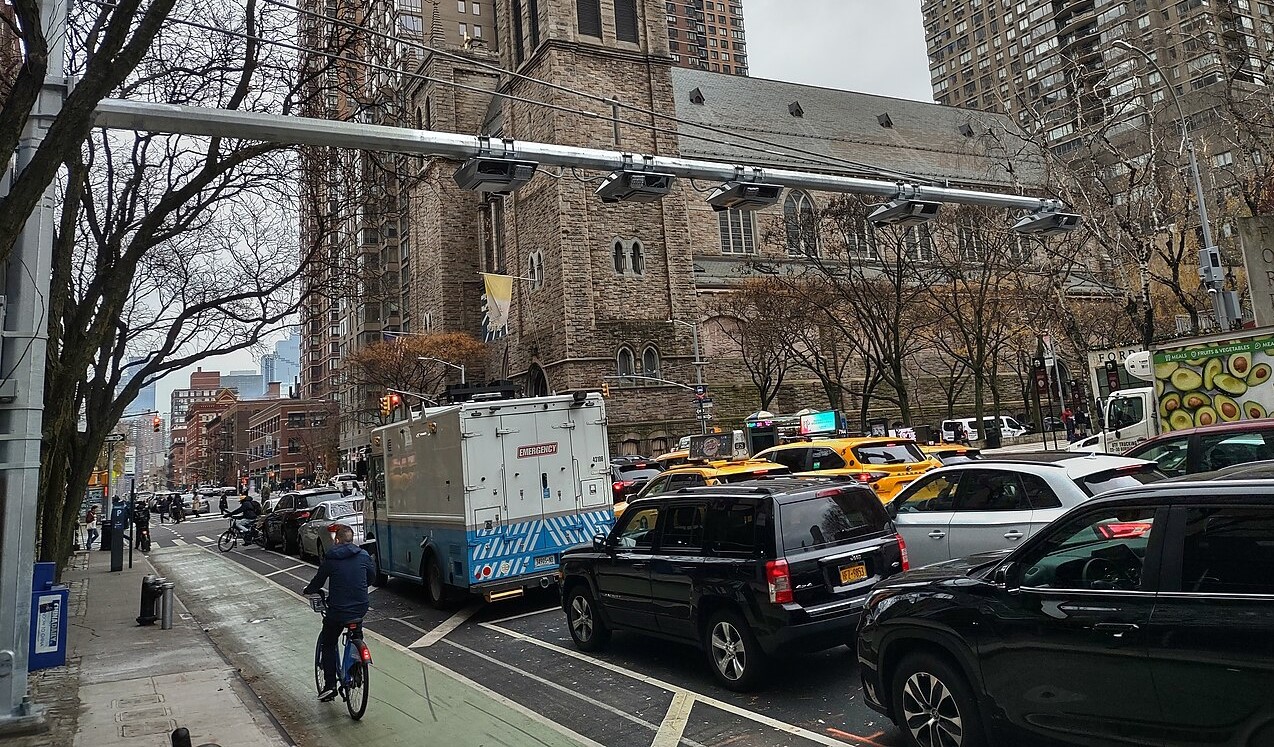Attempts by U.S. cities to build Bus Rapid Transit systems tend to get stymied by a Catch-22: Most Americans have no experience riding great BRT, so mustering the political will to build full-fledged systems -- and reallocate the necessary street space from cars to buses -- is often fiendishly difficult. The results -- incremental bus improvements sold to the public as BRT -- are too watered down to showcase the full extent to which bus-based systems can attract riders and get people to switch from driving to transit.
In Boston, for instance, bus speeds for one route on the Silver Line Waterfront corridor actually decreased despite the project's $619 million pricetag. Meanwhile, cities in Latin America, Asia, and Africa are rolling out new, high-capacity BRT systems at a rapid clip, leaving American transit networks behind.
Cities can get away with calling half-measures "BRT" in part because there are no standards in place to define what truly qualifies as BRT. If all it takes is pre-paid boarding and longer spacing between stops, then the term loses meaning. In a new report, "Recapturing Global Leadership in Bus Rapid Transit" [PDF], the Institute for Transportation and Development Policy sets out to fill this void with BRT standards that American cities can shoot for.
ITDP is proposing a scoring system to grade bus-based transit corridors, which would work much like the LEED certification system for green buildings. The authors say their scorecard has yet to be perfected, but it already spits out results that make intuitive sense -- like the fact that no U.S. city has ever built a first-rate BRT corridor. While American attempts to build bus rapid transit systems have shaved travel times and attracted new riders to transit, ITDP concludes that every single one has failed to meet the highest standards for BRT design.
"Based on what we’ve seen in our work in cities around the world, we think there’s still more that could be done," ITDP director Walter Hook said in a statement accompanying the report. "Getting at least one truly world-class BRT system built in the U.S. could inspire cities around the country to rethink the way they use buses in the fight against increasing traffic congestion and rising fuel prices.”
More than 20 American bus projects have claimed the BRT mantle, the authors report, but only five even qualify as true Bus Rapid Transit: Cleveland's HealthLine, Los Angeles's Orange Line, Pittsburgh's East Busway, Eugene's EmX, and Las Vegas's SDX. Those corridors all distinguished themselves by running buses in the center of the roadbed and physically separating them from regular traffic -- two characteristics that factor heavily in ITDP's 100-point scale.
Even the best American systems barely make the cut as "true BRT." The top-rated bus line in the states, the HealthLine, scores a 63. That's good enough for what ITDP calls the bronze-standard BRT rating, but far short of the gold-standard systems in Bogota (a 93) or Guangzhou (an 89) that use BRT infrastructure for several routes and carry tens of thousands of passengers per hour. Boston's Silver Line and New York's Select Bus Service, meanwhile, scored below the 50-point threshold ITDP has set for projects to qualify as BRT.
To break free from the BRT Catch-22 in the United States, some city will have to go out on a limb and build a gold-standard system that other American cities can look to as a model. With Rahm Emanuel signaling his interest in building BRT with a full complement of features, Chicago might be that city. ITDP also identifies upcoming bus projects in the Bay Area and Montgomery County, Maryland as candidates to raise the standard for American BRT. (The full report goes into tremendous detail about the hurdles that stand in the way of building these projects as robustly as possible, including antiquated engineering guidelines that prioritize traffic flow.)
Once someone decides to build world-class BRT in the United States, it shouldn't be long until Americans see what it can do. The ability to move quickly from design to implementation is one of the chief advantages of BRT. If an ambitious new Midwestern mayor set his mind to it, the nation's first gold-standard BRT system could be up and running by 2014.






